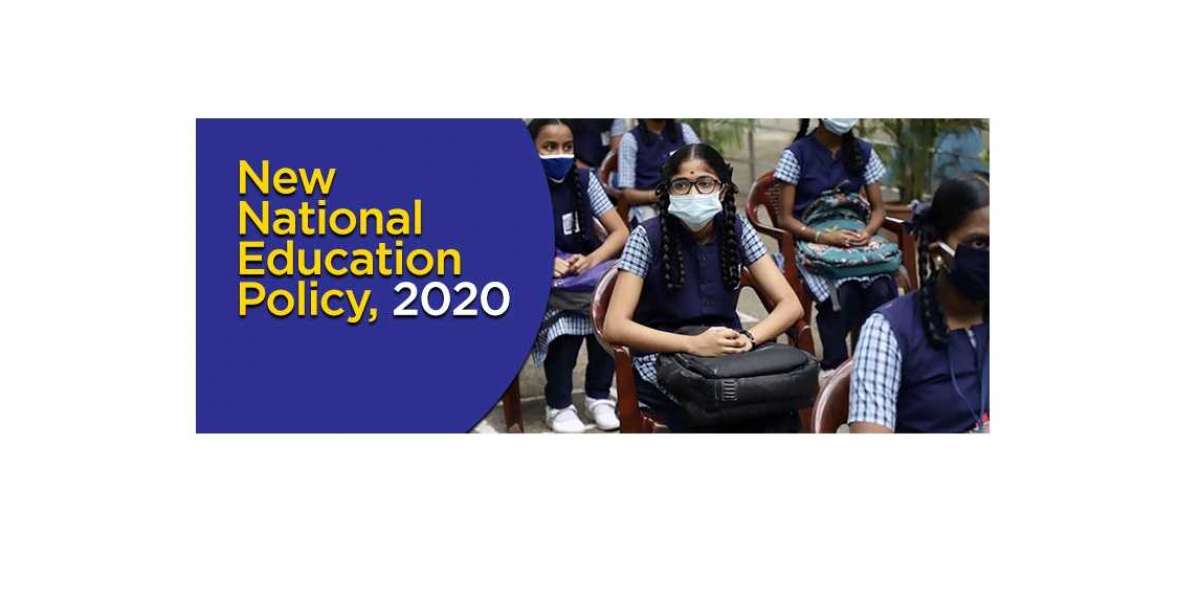The new policy aims to achieve 100 percent of youth and adult literacy in India. The government aims to increase the public investment in the education sector from the current 4.3 percent to reach 6 percent of GDP at the earliest.
Here's are the highlights of India's new National Education Policy 2020:
Universal Access: The NEP 2020 has provisions to ensure universal access to school education at all levels- preschool to secondary.
Some of these provisions include infrastructure support, innovative education centers to bring back dropouts into the mainstream, tracking of students, and their learning levels, facilitating multiple pathways to learning involving both formal and non-formal education modes and association of counselors or well-trained social workers with schools.
Early Childhood Care Education: The 10+2 structure of school curricula is to be replaced by a 5+3+3+4 curricular structure corresponding to ages 3-8, 8-11, 11-14, and 14-18 years respectively. This will bring the uncovered age group of 3-6 years under the school curriculum, which has been recognized globally as the crucial stage for the development of mental faculties of a child. The new system will have 12 years of schooling with three years of Anganwadi/pre-schooling.
NCERT will develop a framework of the early childhood education of children up to the age of 8.
Reforms in School Curricula and Pedagogy: The school curricula and pedagogy will aim for the holistic development of learners by equipping them with the key 21st-century skills, reduction in curricular content to enhance essential learning and critical thinking and a greater focus on experiential learning. Students will have increased flexibility and choice of subjects. There will be no rigid separations between arts and sciences, between curricular and extra-curricular activities, between vocational and academic streams.
Vocational education will start in schools from the 6th grade and will include internships.
Multilingualism and the Power of Language: The NEP 2020 advocates for mother-tongue/local language/regional language as the medium of instruction at least till Grade 5, but preferably till Grade 8 and beyond. Sanskrit to be offered at all levels of school and higher education as an option for students, including in the three-language formula. Other classical languages and literature of India also to be available as options. No language will be imposed on any student. Several foreign languages will also be offered at the secondary level.
Higher Education:
Increase GER to 50% by 2035: NEP 2020 aims to increase the Gross Enrolment Ratio in higher education including vocational education from 26.3 percent (2018) to 50 percent by 2035. At least 3.5 crore new seats will be added to higher education institutions.
Holistic Multidisciplinary Education: The policy introduces broad-based, multi-disciplinary, holistic undergraduate education with flexible curricula, creative combinations of subjects, integration of vocational education, and multiple entries and exit points with appropriate certification. UG education can be of 3 or 4 years with multiple exit options and appropriate certification within this period. For example, certificate after 1 year, advanced diploma after 2 years, Bachelor’s degree after 3 years and Bachelor’s with research after 4 years.
An Academic Bank of Credit is to be established for digitally storing academic credits earned from different institutes so that these can be transferred and counted towards final degree earned.
Multidisciplinary Education and Research Universities (MERUs), at par with IITs, IIMs, to be set up as models of best multidisciplinary education of global standards in the country.
The National Research Foundation will be created as an apex body for fostering a strong research culture and building research capacity across higher education.
Regulation: Higher Education Commission of India (HECI) will be set up as a single overarching umbrella body for entire higher education, excluding medical and legal education. HECI will function through faceless intervention through technology and will have powers to penalize higher education institutions for not conforming to norms and standards. Public and private higher education institutions will be governed by the same set of norms for regulation, accreditation, and academic standards.
Rationalized Institutional Architecture: The definition of the university will allow a spectrum of institutions that range from Research-intensive universities to teaching-intensive universities and autonomous degree-granting colleges. Affiliation of colleges is to be phased out in 15 years and a stage-wise mechanism is to be established for granting graded autonomy to colleges. Over some time, it is envisaged that every college would develop into either an autonomous degree-granting college or a constituent college of a university.







